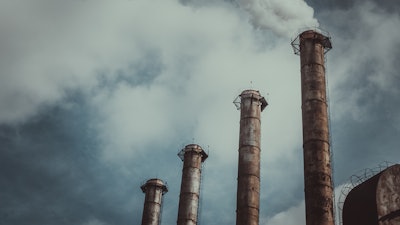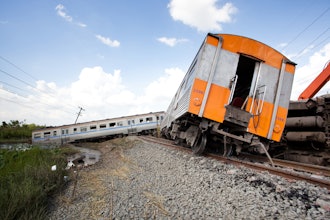
Whether new or retrofit construction, monitoring hazardous gases in industrial plants and warehouses, as well as at loading docks and receiving areas, is often crucial to safety, compliance, and productivity. Exposure to potentially toxic gases can come from a wide variety of sources, particularly in partially or totally enclosed areas.
According to an OSHA Factsheet, carbon monoxide (CO) is a common industrial hazard resulting from the incomplete burning of material containing carbon such as natural gas, gasoline, oil, propane or coal. “Carbon monoxide is harmful when breathed because it displaces oxygen in the blood and deprives the heart, brain and other vital organs of oxygen. Large amounts of CO can overcome you in minutes without warning — causing you to lose consciousness and suffocate,” states the OSHA Factsheet.
“You may be exposed to harmful levels of CO in boiler rooms, warehouses, petroleum refineries, pulp and paper production, and steel production; around docks, blast furnaces, or coke ovens” as well as in occupations such as forklift operator, diesel engine operator and welder, adds the Factsheet. Similarly, industrial workers are exposed to nitrogen dioxide (NO2) from the burning of fuel for vehicles, equipment and power generation, which can cause respiratory irritation and aggravate respiratory diseases.
Within warehouses and around loading docks/receiving areas, propane burning forklifts and equipment can result in a build-up of carbon dioxide (CO2) with complete combustion, or result in excess CO with incomplete combustion. Breathing too much CO2 can cause headaches, dizziness, difficulty breathing, elevated blood pressure, and even coma, asphyxia and convulsions.
While loading docks and shipping/receiving areas are only partially enclosed when warehouse bay doors are opened, the prevalence of diesel trucks can make monitoring toxic gases essential.
To enhance safety, comply with regulations and minimize the risk of dangerous gases that can be inhaled or even flammable or explosive, gas monitoring systems can be set to detect for specific thresholds. After detection, such systems will typically alarm to warn workers in the vicinity, and can also text or email supervisory personnel or managers to trigger an immediate response. A record is often kept to document compliance.
However, the challenge is that industrial processes and capacities change over time. Design specifications written at the start of a project can evolve, and so can the requirements. Also, local jurisdictions and code officials may have different demands that must be accommodated.
Consequently, working with a vendor with expertise in gas monitoring systems and utilizing advanced, flexible modular systems can significantly speed project completion while facilitating design changes. So too, can new and more reliable wireless detection systems that promise to speed installation and reduce wiring costs when retrofitting or expanding detection in existing structures.
“On almost every project, design changes occur so we choose to work with expert vendors that help us quickly adapt,” says Adam Hitchen, President of Atlantis Comfort Systems, a Rhode Island-based HVAC contractor that provides commercial and residential service across the East Coast.
According to Hitchen, in one project in Boston there were changes in the design of a loading dock area that required accommodation. “They erected a wall, which required an extra ventilation system, a makeup air system, an independent CO/CO2 detection system, and a change in the existing panel planned for the job,” says Hitchen. On the project, Atlantis Comfort Systems relied on Acme Engineering to change the system midstream. “Acme provided the new system, the new panel, and adjusted the existing panel,” says Hitchen, who notes that the wiring diagram, engineering drawing, and necessary sequence of operations was also provided.
Acme's Multi-Gas Monitoring System (MGMS) is a gas detection network capable of communicating in real time with any smart device. The system utilizes industry-standard communication protocols like Ethernet and BACnet that allow remote supervision and reporting to building automation systems.
When designing a gas detection network, after receiving a floor plan the company creates performance-based specifications, identifies the optimal sensor locations, elaborates the most energy efficient activation sequence for the ventilation system, and prepares a job specific wiring diagram, usually within a day or two.
According to Hitchen, when design changes occur the gas monitoring company reacts quickly. “They start with the intent of the design engineer and when project requirements change, they rapidly revise it and provide what is needed. This helps with code compliance,” he says. For John Rainone, previously a senior project manager with Automated Logic, a Carrier company, the main benefit of working with a vendor with gas monitoring expertise was expediting complex projects. The vendor provided certified engineering drawings up front and as needed.
“No one waited for us on a multi-million-dollar project, which was key because it carried a significant per day late penalty. Altogether, the design expertise probably saved us between two to four weeks,” says Rainone.
Robert Presser is the President of Acme Engineering Prod., Inc.





















